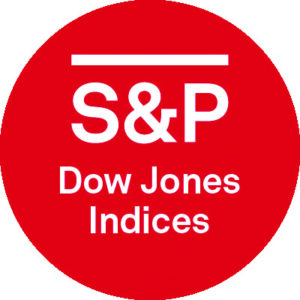NE BUSINESS BUREAU
CHENNAI, SEP 22

India’s Passive Growth story continues to climb with significant growth in the past few years. At Rs 6.04 lakh crore AUM size, this accounts for 15 percent of the Rs 39 lakh crore industry pie. As the industry grows, we see asset managers diversify their product offerings and are looking at alternative investment strategies such as Factor Investing.
- At Rs 6.04 lakh crore AUM size, this accounts for 15 percent of the Rs 39 lakh crore industry pie.
- Globally the investment in factors is significant and as of March 31, 2022, factor ETFs managed about USD 1.6 trillion assets globally, a 24.6% CAGR compared with the USD 178 billion 10 years ago
- Combining the four S&P BSE factors to form a multi-factor strategy could serve as a substitute for a traditional equity allocation.
Globally the investment in factors is significant and as of March 31, 2022, factor ETFs managed about USD 1.6 trillion assets globally, a 24.6% CAGR compared with the USD 178 billion 10 years ago.
What is factor Investing
- In general, factor investing refers to an approach that targets stock characteristics that drive the difference in expected returns over the long term.
- Sometimes, factor investing is referred to as smart beta, or strategic beta, because the factor approach will deviate the underlying portfolio from the market portfolio (the market beta) in a systematic method.
- Some of the common factors that have been well documented in academic literature and adopted by the investment industry include low volatility, momentum, quality, and value.
- While active fund managers and institutional investors have often used a factor-based approach either to strategically construct portfolios or to tilt their portfolios to capture the factor risk premium, factor-based investing can be implemented passively with the aid of factor indices aiming to provide exposure to specific factors, following rules-based methodologies, which tend to be more cost effective and transparent than actively managed portfolios.
How do factor indices work
- Factor indices are not designed to replace market-cap-weighted indices. While broad-based or market-cap-weighted indices represent the entire investable opportunity set for market participants, factor indices look to capture targeted risk premia following a rules-based and transparent index methodology.
- Not only is the stock selection for these indices based on specific factor criterion, but the stock weights are also related to the stocks’ factor scores, which are used to create factor tilts within the index portfolios.
- In contrast to passive products based on broad-based indices, factor-based strategies can provide an opportunity for market participants to express their active views away from market-cap-based portfolios. Thus, like active funds, factor performance should be evaluated in the long run against a market-capitalization-weighted benchmark.
- If we look at how the S&P BSE Factor Indices have performed in the local market some of our key findings show that the S&P BSE low volatility, S&P BSE momentum and S&P BSE Quality factors have worked well in the Indian market over the 17 years since 2005, while the value factor underperformed the market. The S&P BSE Value factor Index had negative correlations against the other three factors.
What is a Multi Factor Strategy
- While single-factor smart beta strategies tend to outperform the market over the long term, they experience periods of underperformance at different macroeconomic conditions, depending on their cyclical characteristics.
- Blending factors in a portfolio to diversify factor exposure may help deliver smoother excess return across business and market cycles, with the effectiveness depending on the correlation of returns among factors.
- Combining the four S&P BSE factors to form a multi-factor strategy could serve as a substitute for a traditional equity allocation. Over the back-tested period (during the past 17 years since 2005), the multi-factor strategy delivered over 2% per year excess return, with about 5% tracking error, and demonstrated a resilient performance across different market environments.









